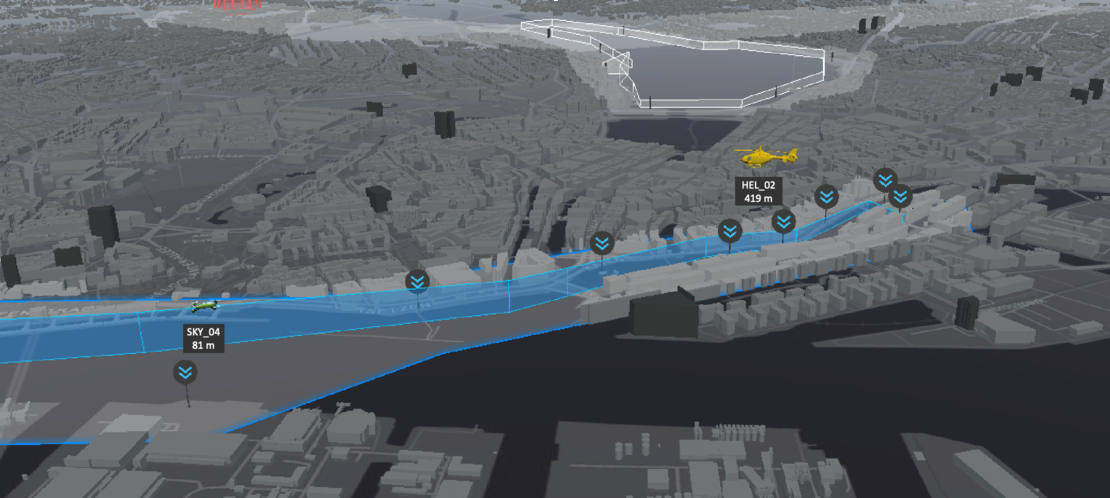Quicklinks
Quicklinks

Hamburg is conducting a lot of tests now so that more drones can be flown simultaneously in the future. Special mobile data connections and efficient air traffic management will make the lower airspace more secure and more usable. HHLA Sky is working to soon make unmanned flight run as routinely as commercial passenger flight.
Whether it’s for inspecting a container gantry crane or quickly transporting special tools, pilots these days are controlling their commercial drones using mobile networks and 4G SIM cards. While it’s already a very reliable process, it also has room to improve. Which is what HHLA Sky is working on in partnership with Deutsche Telekom.
Concretely, this means that real-time video of live inspection will be transmitted with guaranteed data bandwidth and enhanced security. With the help of the new 5G mobile network standard and the “campus networks” from Telekom, HHLA Sky’s drones will get their own fast data connections. This will allow them to operate in the air without the burden of the rest of the city’s mobile data exchange.
The network will be tested soon at an industrial site in North-Rhine Westphalia with an area of four square kilometres, where the HHLA Sky drones are produced. In practice, HHLA Sky will use the new Campus 5G connection at Container Terminal Tollerort in the Port of Hamburg. The drones can fly in this kind of campus network using a special SIM card and as part of a closed user group.
Director Matthias Gronstedt explains the importance of 5G and campus networks for HHLA Sky: “They create more security, which is incredibly important for the future acceptance of drone flights in urban areas.” Because 5G is an international standard, HHLA Sky can work with campus network providers to globally market its drone fleet services with over 100 aircraft with the highest level of security.
“Enabling such high-quality services with the help of campus network logic is the cherry on top of 5G,” adds Tom Pöggel, who works in Telekom’s 5G Business Development department. Using special data highways for drones could soon be possible all over the world because of international standardisation.
International, and in this case European, standards are also being considered in the UDVeo project, which is being led by Hamburg’s Helmut Schmidt University (HSU). HHLA Sky is involved in this project as well. The abbreviation UDVeo stands for “Urbaner Drohnenverkehr effizient organisiert”, which can be translated as “urban drone traffic organized efficiently”. The project was founded in response to the EU directive regulating the management of the lower airspace, called U-Space, which will go into effect in January 2023.

The project consortium is looking into what this means both legally and technically for Germany and existing air traffic regulations. Essentially, the management of the U-Space is being tested out in practice for the future in Hamburg.
They are working on strategic conflict management, which plans and monitors the approval of flights. To test this, the consortium has built a control centre prototype for the U-Space that complies with the upcoming EU regulation. It was presented for the first time at the ITS World Congress in Hamburg in October and sparked interest with many of the trade visitors.
HHLA Sky doesn’t just bring the control centre software to the project – it also brings the entrepreneurial perspective. The innovative company developed the world’s first scalable end-to-end drone system that enables the secure operation of a large drone fleet beyond the visual line of sight. By using it, the project results can actually be applied to real business cases.
In this way, the project is already implementing a future EU regulation in such a way that everyone’s safety is guaranteed. Many business models for drone applications only become realistic once the lower airspace is efficiently managed with clear rules for all parties. So, very similar to what you’d experience as a passenger departing Hamburg Airport. Find out more about HHLA Sky and don't forget to activate the English subtitles for the video.